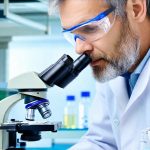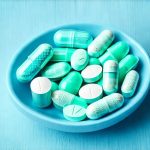Introduction
The question of how long bacteria can survive in a sample is surprisingly complex. It’s not simply about time; it’s a dance between environmental factors, bacterial species, the initial concentration of organisms, and even the nature of the sample itself. Understanding this longevity isn’t merely an academic exercise – it has profound implications for fields ranging from food safety and healthcare to forensic science and environmental monitoring. A seemingly straightforward question quickly unravels into a multifaceted investigation requiring consideration of bacterial resilience, dormancy mechanisms, and the intricate interplay between microbes and their surroundings. Ultimately, predicting bacterial survival is crucial for assessing risk, designing effective sterilization protocols, and interpreting data accurately across a wide spectrum of scientific disciplines.
Bacterial persistence isn’t always about active growth; more often it’s about survival in challenging conditions. Many bacteria can transition into dormant states where metabolic activity slows dramatically or even ceases altogether, allowing them to withstand periods of starvation, extreme temperatures, desiccation, and exposure to disinfectants. These strategies allow bacterial populations to ‘wait out’ unfavorable conditions until a more hospitable environment returns, at which point they can revive and resume growth. This ability to enter dormancy is a key factor in determining how long bacteria can remain viable within a given sample. Therefore, focusing solely on measuring growth won’t reveal the full picture; viability – the capacity for revival – is the critical metric when assessing bacterial longevity.
Factors Influencing Bacterial Survival Time
Bacterial survival time isn’t fixed but rather exists along a spectrum heavily influenced by numerous interconnected factors. The type of bacteria present is arguably the most significant determinant. Bacillus and Clostridium species, for example, are known for their ability to form hardy endospores – highly resistant structures that can survive extreme conditions for years, even decades. In contrast, more delicate bacterial species like Neisseria gonorrhoeae, which lacks spore-forming capabilities, have comparatively short survival times outside of a host environment. The sample matrix itself plays a critical role too; bacteria will persist longer in nutrient-rich environments than in sterile or depleted ones.
The environmental conditions surrounding the sample are also paramount. Temperature is a major factor: generally, lower temperatures slow down metabolic processes and extend bacterial survival, while higher temperatures accelerate die-off (though not always – some thermophilic bacteria thrive at high temps). Humidity levels impact desiccation rates; dry environments rapidly lead to cell death, whereas moist conditions support longer viability. Exposure to ultraviolet (UV) radiation or other forms of disinfection can significantly reduce bacterial populations, but even then, some resistant cells may survive. Finally, the presence of competing microorganisms within a sample can affect survival, either through direct antagonism or competition for resources.
The initial concentration of bacteria is another crucial element. A higher starting population will naturally take longer to decline to undetectable levels, even under unfavorable conditions. This is why assessing bacterial load at collection is essential in many applications. Consider these points:
– Bacterial species and spore formation capacity
– Sample matrix composition (nutrient availability)
– Temperature and humidity of storage
– Exposure to disinfectants or radiation
– Initial bacterial concentration
Survival in Different Sample Types
The type of sample significantly impacts bacterial survival, dictating the environmental pressures that bacteria face. In a clinical sample like blood or urine, factors such as immune response, antibiotic presence, and nutrient availability play significant roles. Bacteria in these samples generally have shorter survival times compared to those found in more protected environments. Conversely, in food products, bacterial persistence is influenced by ingredients (sugar content, pH), processing methods (pasteurization, fermentation), and storage conditions. Food matrices can provide shelter from environmental stressors and offer nutrients that prolong viability.
Environmental samples – soil, water, surfaces – present a unique set of challenges for bacteria. Soil, rich in organic matter, can harbor diverse microbial communities and provide protection against desiccation and UV radiation. Water samples are affected by factors like salinity, pH, and the presence of pollutants. Surfaces, such as countertops or medical instruments, have varying degrees of porosity and cleanliness, impacting bacterial adherence and survival. It’s important to remember that biofilms – communities of bacteria adhered to surfaces – offer a significantly higher level of protection compared to planktonic (free-floating) cells. Biofilm formation dramatically increases resistance to disinfectants and environmental stresses.
Bacterial Dormancy and Viability Assessment
Bacterial dormancy is a key survival strategy, allowing organisms to enter a state of reduced metabolic activity in response to unfavorable conditions. This can manifest in several ways, including the formation of endospores (as seen in Bacillus and Clostridium) or the development of viable but non-culturable (VBNC) cells. VBNC cells are alive but unable to grow on standard laboratory media, making them difficult to detect using conventional methods. Understanding dormancy is crucial because dormant bacteria can revive when conditions improve, potentially causing infection or spoilage. This presents challenges for both diagnostic testing and sterilization protocols.
Assessing bacterial viability – determining whether a bacterium is alive and capable of reproduction – requires more than simply counting cells under a microscope. Traditional culture-based methods only detect viable cells that can grow on the available media, missing VBNC cells and potentially underestimating the true bacterial load. More advanced techniques are needed to accurately assess viability:
1. Direct microscopic counts using stains like acridine orange or propidium iodide, which differentiate between live and dead cells based on membrane integrity.
2. Flow cytometry, a technique that allows for rapid analysis of individual cells based on their size, granularity, and fluorescent properties.
3. Molecular methods such as quantitative PCR (qPCR) to detect bacterial DNA, but this doesn’t necessarily indicate viability.
The Role of Biofilms in Prolonged Survival
Biofilms are structured communities of bacteria encased within a self-produced matrix of extracellular polymeric substances (EPS). This EPS provides significant protection against environmental stresses like disinfectants, antibiotics, and immune cells, dramatically increasing bacterial survival time. Biofilm formation is often triggered by surface attachment, nutrient limitations, or stress signals. Once established, biofilms exhibit enhanced resistance compared to planktonic bacteria due to several factors:
– Limited penetration of antimicrobial agents into the biofilm matrix
– Metabolic gradients within the biofilm, leading to reduced growth rates and decreased susceptibility to antibiotics.
– The presence of persister cells – a small subpopulation of dormant cells that are highly resistant to killing.
Removing biofilms is significantly more challenging than eradicating planktonic bacteria. Disinfection protocols often require higher concentrations of biocides or longer contact times to effectively disrupt the biofilm matrix and kill the underlying bacterial population. This has major implications for infection control in healthcare settings, as well as food safety and industrial hygiene.
Implications for Forensic Science and Postmortem Studies
The longevity of bacteria even after death is a critical consideration in forensic science and postmortem investigations. Bacterial decomposition processes play a significant role in the breakdown of organic matter and can influence estimates of time since death (TSD). Understanding how long different bacterial species survive and remain active within a cadaver or burial environment is crucial for accurate TSD estimations.
Postmortem microbial dynamics are complex, influenced by factors like temperature, humidity, soil composition, and the presence of insects. Different bacteria dominate at different stages of decomposition, reflecting changes in available nutrients and environmental conditions. Clostridium perfringens, known for its spore-forming capabilities, is often associated with gas gangrene and can persist long after death, contributing to bloating and tissue breakdown. Analyzing bacterial communities present on a body or within the surrounding environment can provide valuable insights into TSD, geographic location, and potential causes of death. Moreover, bacterial DNA found at crime scenes can be used for identification purposes, though interpreting this data requires careful consideration of postmortem survival and contamination risks. The continued study of microbial ecology in these contexts is vital to refining forensic methodologies and enhancing the accuracy of investigations.





















